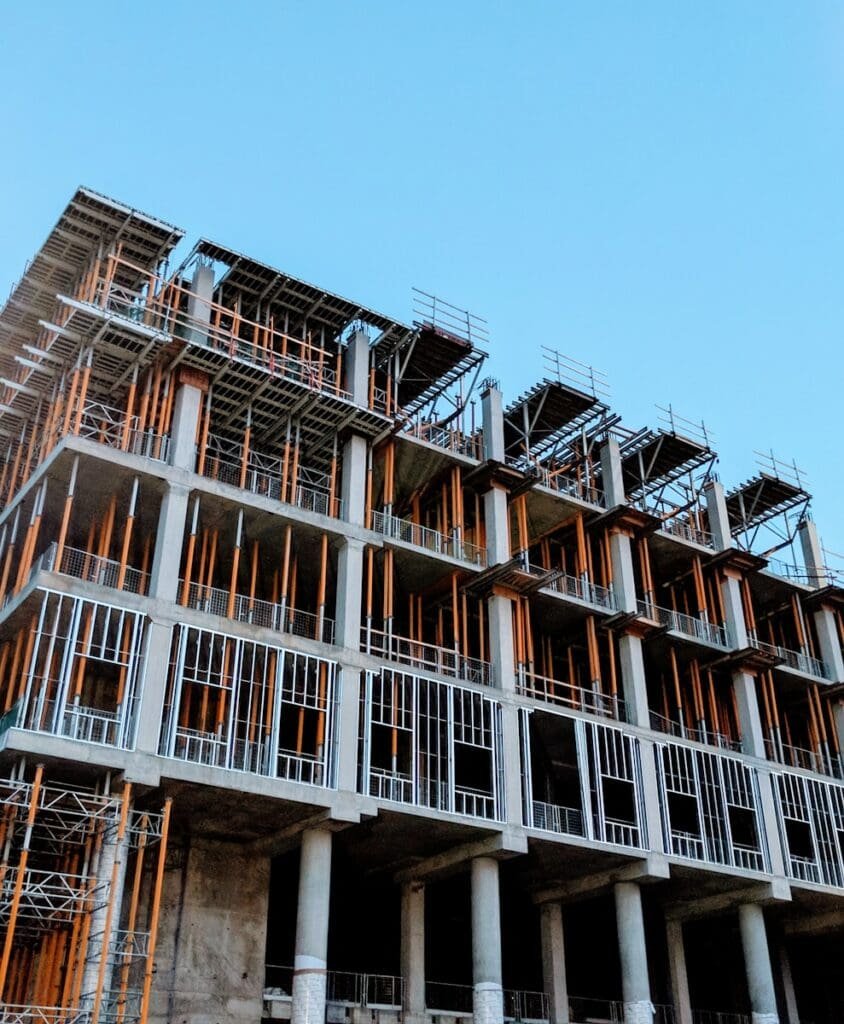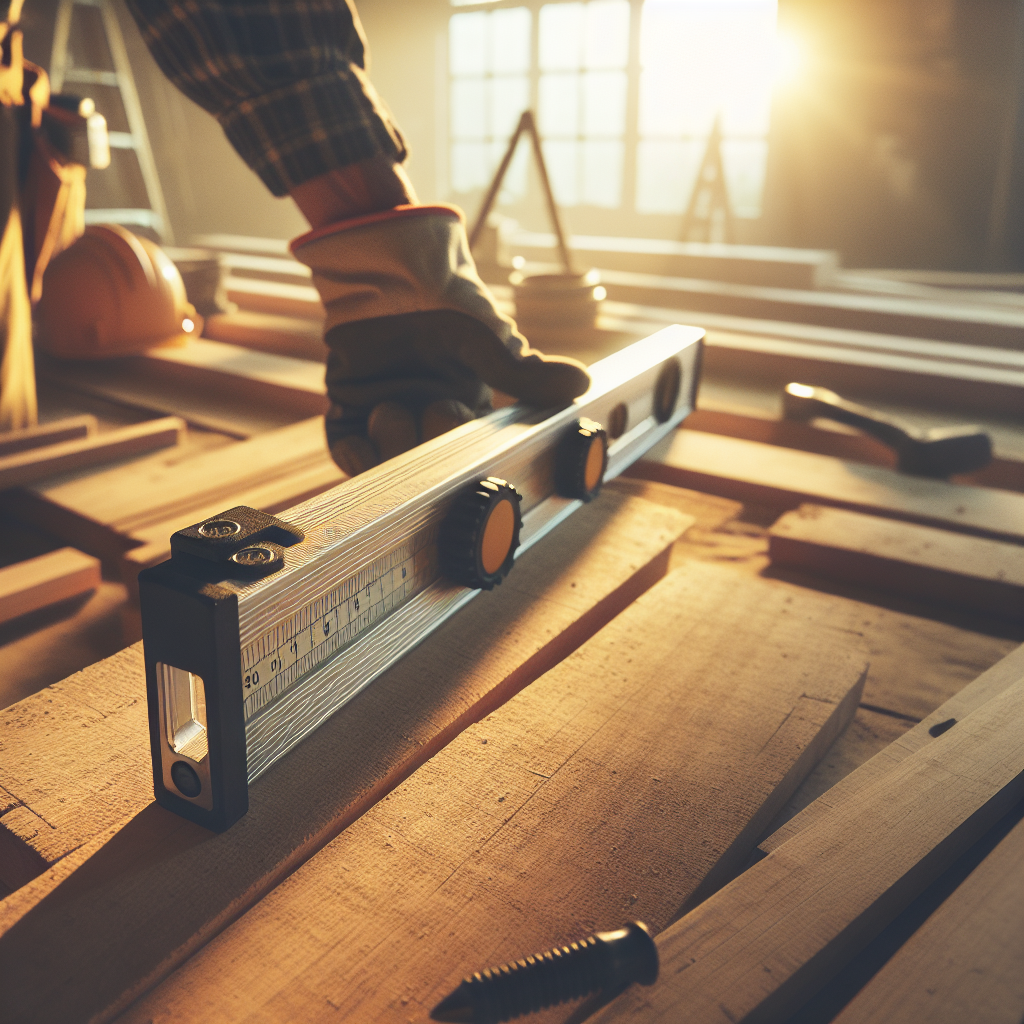A Comprehensive Guide to “Plumb” in Construction
How many times have you come across the term “plumb” in construction and wondered exactly what it means? Or perhaps you’re a seasoned builder who fully grasps the concept but needs a refresher on the specifics.
Either way, you have come to the right place.
In this article, we aim to explore the ins and outs of “plumb” – a foundational concept in the construction industry. From explaining its basic meaning to discussing its vital role in construction, we’ve got it all covered!
Plus, we’ll venture into the varied tools used to check for plumb and practical steps to ensure your work stays plumb.
Curious about advanced techniques and practices? Don’t worry; we have a section dedicated to that too. So put on your learning caps as we explore understanding “plumb” in the world of construction!
Table of Contents
Defining “Plumb” in Construction

Understanding “Plumb” in Vertical Structures
Plumb is a fundamental term in the construction industry. It refers to something that is perfectly vertical. If a structure or a line is “plumb,” it means it is aligned straight up and down, forming a 90-degree angle with the horizontal plane.
The Importance of Being Plumb
Ensuring that elements of a building are plumb is essential for several reasons:
- Structural Integrity: A plumb structure can evenly distribute weight and stress, preventing warping or leaning.
- Aesthetic Value: Walls, beams, and other components that are not plumb can appear crooked, leading to an unprofessional look.
- Safety: Properly aligned structures are less likely to suffer from structural failures or cause accidents on-site.
Tools to Check for Plumb
Various tools can help you determine if an element is plumb:
Spirit Level
A spirit level, also known as a bubble level, has a liquid-filled vial with a bubble. When the bubble is centered between two lines, the tool is level (horizontal) or plumb (vertical).
Plumb Bob
A plumb bob is a weight, usually with a pointed tip on the bottom, suspended from a string and used as a vertical reference line. By observing where the weight hangs, professionals can check for plumb.
Laser Level
Laser levels provide a quick and accurate way to check for plumb over longer distances.
Practical Takeaways
Here’s how to ensure your work is plumb:
- Use the Right Tool: Choose between a spirit level, plumb bob, or laser level depending on your needs.
- Double-Check Measurements: Always verify your measurements from multiple angles to ensure accuracy.
- Frequent Inspection: Regularly check that your structures remain plumb throughout the building process.
For more details, you might check out additional resources such as a detailed guide on Family Handyman.
What is Plumb Line Rule?

The Concept Behind Plumb Line Rule
The plumb line rule is a method used in construction and surveying to ensure that structures or lines are perfectly vertical or “plumb”. This old, yet effective technique leverages the simplicity of gravity to provide a vertical reference line.
Basic Principles of the Plumb Line Rule
The plumb line consists of a string with a weight (the bob) attached to its end. When suspended, gravity pulls the bob straight down, creating a precise vertical reference. Here are some of the principles:
- Gravity Reliance: The plumb line rule relies solely on gravity to determine vertical alignment, making it mechanical and highly reliable.
- Universal Use: Plumb lines are used universally in different types of construction projects, from tall skyscrapers to residential homes.
Applications of the Plumb Line Rule
The plumb line rule finds widespread applications in various tasks and industries:
- Building Foundations: Ensures that the building foundations are vertical for optimal structural integrity.
- Woodworking: Useful in creating vertical lines when constructing furniture or cabinetry.
- Masonry: Helps in aligning the bricks or stones precisely to achieve a perfectly straight wall.
Advanced Tools and Techniques
While the traditional plumb line is still in use, advancements in technology have introduced more sophisticated tools for checking plumbness:
| Tool | Advantages |
|---|---|
| Digital Level | Provides high precision and can be used in various orientations. |
| Laser Plumb Bob | Projects a vertical line over long distances, increasing accuracy and efficiency. |
Ensuring Accurate Plumb Measurements
Applying the plumb line rule should not become a ‘set it and forget it’ process. Here’s how to maintain accuracy and reliability:
- Regular Calibration: Ensure that any digital or laser tools are regularly calibrated for accuracy.
- Site Conditions: Consider site-specific conditions like wind, which may affect the plumb line’s accuracy.
- Comparative Method: Cross-check plumb line results with other tools like the spirit level for double assurance.
What is the Plumb Bob Rule?
The Concept behind the Plumb Bob Rule
The plumb bob rule involves using a simple tool to determine whether a structure or element aligns perfectly vertical to the earth’s gravitational pull. The plumb bob consists of a weight (often made of brass or lead) attached to a string or line.
When suspended, gravity pulls the weight directly downward, creating an accurate vertical reference line.
Purpose and Functionality
The plumb bob rule serves several important functions in construction and various trades:
- Accuracy: The plumb bob offers unparalleled accuracy in achieving true vertical alignment, critical for structural soundness and aesthetics.
- Simplicity: Its simple design makes it easy to use without needing a power source or complex setup.
- Cost-Effectiveness: Being a mechanical tool, it’s affordable and doesn’t require expensive maintenance.
How to Use a Plumb Bob
Using a plumb bob involves a straightforward process. Here’s how to do it:
- Suspend the Bob: Attach the string to a stable point above the area you wish to check. Allow the weight to hang freely and ensure the line is straight.
- Wait for Stability: Let the weight stop swinging to ensure it hangs freely, providing a precise vertical line.
- Measure Alignment: Compare the structure’s alignment with the vertical line formed by the string. Adjust the structure as needed to achieve plumbness.
Limitations of the Plumb Bob
While the plumb bob is effective, it comes with a few limitations:
- Environmental Factors: Wind and movement can sway the string, making it difficult to get an accurate reading.
- Length Constraints: The plumb bob is most effective over limited distances; for taller structures, additional tools like laser levels may be more practical.
- Manual Handling: Requires manual setup and measurement, which may introduce human error.
How Much Out of Plumb is Acceptable?
Industry Standards for Plumb Tolerances
In the construction world, “out of plumb” refers to how much a vertical structure deviates from being perfectly vertical. While it’s nearly impossible to achieve perfection in any built environment, industry standards help determine acceptable limits for deviations.
Commonly Accepted Tolerances:
- Walls: For most residential and commercial structures, walls are usually considered acceptably plumb if they deviate no more than 1/4 inch for every 10 feet.
- Columns and Beams: Structural elements like columns and beams typically have stricter tolerances, often around 1/8 inch per 10 feet of height.
- High-Rise Buildings: For taller structures, especially those above 10 stories, the tolerance might be as little as 1/8 inch per floor to ensure cumulative plumbness is maintained.
Why Tolerances Matter
Tolerances are critical in construction for multiple reasons:
- Structural Safety: Even a small deviation can multiply in larger structures, leading to potential safety hazards.
- Material Compatibility: Misalignment can cause difficulties in fitting other components like windows, doors, and extra fittings.
- Project Aesthetics: Visible crookedness can compromise the visual appeal and perceived quality of the construction project.
Measuring Out of Plumb
To ensure that structures stay within acceptable tolerances, different methods and tools are used for accurate measurement.
Techniques for Measurement:
- Using a Plumb Bob: Attach the plumb bob from a high reference point and measure the deviation of the structure from the vertical line.
- Employing a Laser Level: Set up a laser level at a specific height and measure the structure’s position relative to the laser line. This method is highly accurate and efficient over larger distances.
- Spirit Level: Attach a long spirit level vertically against the structure and examine the bubble for small-scale measurements.
Correcting Out of Plumb Issues
When deviations from plumb are observed, quick corrective measures should be taken to bring structures back within acceptable limits.
Steps for Correction:
- Repositioning: Adjust the misaligned elements and secure them with temporary supports before permanently fixing them in place.
- Shimming: Use shims to correct minor deviations. This method works well for minor adjustments and provides a stable fix.
- Reconstruction: For large deviations, it may be necessary to dismantle and rebuild the affected section to achieve true plumbness.
Wrapping Up on Plumb in Construction
In conclusion, proper understanding of the concept of ‘plumb’ is essential in the construction industry. The quality, structural integrity and aesthetic appeal of a building largely depend on its components being perfectly vertical or ‘plumb’.
Tools such as spirit levels, plumb bobs, and laser levels are used to check for plumb, with each tool suitable for different scenarios.
By double-checking measurements and conducting regular inspections, construction professionals can ensure the continuous alignment of structures, maintaining the high standards of safety and integrity that are vital in this field.
Frequently Asked Questions – FAQs
What does ‘plumb’ mean in construction?
‘Plumb’ in construction refers to a structure or a component being perfectly vertical, aligned straight up and down forming a 90-degree angle with the horizontal plane.
Why is it important for a building to be plumb?
Ensuring a building is plumb is vital for structural integrity, aesthetic value, and safety. Properly aligned structures evenly distribute weight and stress, prevent warping or leaning, and are less likely to suffer from structural failures.
What tools are used to check for plumb?
Tools used to check for plumb include the spirit level, the plumb bob, and the laser level. The choice of tool depends on the need and complexity of the task at hand.
What is the plumb line rule?
The plumb line rule is a method used to ensure that structures or lines are perfectly vertical. It makes use of gravity to provide a vertical reference line, making it a reliable and universally used method in different types of construction projects.
What does ‘out of plumb’ mean and how is it corrected?
‘Out of plumb’ refers to how much a structure deviates from being perfectly vertical. Acceptable limits for deviations are set by industry standards. Corrections can be made by repositioning, shimming, and if necessary, reconstruction.






